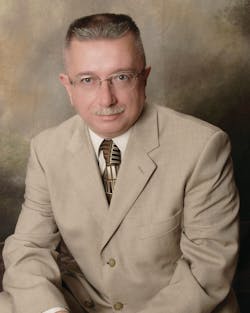
In the fire service, there is perhaps no single event that stresses the need for personnel safety more than a mayday. A number of people, including Billy Goldfeder, deputy chief of the Loveland-Symmes (Ohio) Fire Department, have published a significant volume of work in Firehouse based upon interviews with those who have experienced a mayday firsthand. Since this article focuses on the role of the communications center in managing a mayday, telecommunicators were asked to share their experiences from the “other side of the microphone.”
The call in question
The case selected involves a dispatcher who had more than 10 years on the job and who was employed by a consolidated communications agency that served a mid-size municipal career department. The 9-1-1 center uses dedicated call takers and dispatchers; the primary focus of the latter is placed upon working the radios.
That day, firefighters were dispatched to a structure fire with a child trapped; responders later discovered that the “child” was actually an adult with autism or a similar condition. But based upon the initial belief that a child was involved, one of the first responding engine crewmembers donned full personal protective equipment (PPE), and entered the building. Upon locating the victim, the firefighter discovered that the victim was afraid to leave the residence and became combative. The captain entered to assist the firefighter while the remaining crewmembers continued gearing up outside the structure. What follows is the telecommunicator’s description of events:
“The firefighter’s face mask was broken after he called mayday. He called it twice in a row. I had to turn to my partner and verify the mayday, not because I didn’t understand him, but because I wanted to be wrong in what I heard. I announced the mayday to all responding units, because no one but dispatch had heard or understood the transmission. The firefighter never responded to our numerous attempts to raise him. The captain who followed him in was also trapped, but neither dispatch nor the responding companies knew this until they were both out of the building, because he [the Captain] never called mayday.
“The officer was uninjured, and the firefighter had second-degree burns to his neck and ear. He was transported and spent the night in the hospital. The [autistic] male victim had third-degree burns to over 50 percent of his body and had to be flown to a burn center. There was no mayday policy at that time; however, one was instituted shortly thereafter. It was the longest few minutes of my career … It is something I hope to never hear coming through the radio again.”
The 10 assumptions
From a fire service perspective, the outcome in this case could have been much worse. Still, it raises questions that every fire officer and Public Safety Answering Point (PSAP) manager must answer. Without this confirmed knowledge, the control over one of the most impactful events in the fire service is left to chance. Making any of the 10 deadly assumptions below can quickly lead to negative results.
- Assuming that a mayday plan is in place: As basic as this may seem, incidents such as the one described clearly point out that dispatchers/call centers don’t always have a plan in place. And without proper guidance, management of the mayday becomes a freelance affair, with no assurance that appropriate tasks will be carried out, and no degree of accountability will be upheld.
- Assuming that the mayday plan is someone else’s responsibility: As with many complex undertakings, a mayday plan, or standard operating procedure (SOP), requires input from all involved sectors. It is critical that both response and communications center resources be brought to the table to create a workable SOP document.
- Assuming that your mayday plan works: Has it been tested? When? How rigorously? Have changes to equipment, communications systems or other procedures taken place since your last revision? Are regularly scheduled reviews carried out? If so, by whom? All the disciplines involved in drafting the plan should also be part of the validation process, as they bring with them updated information and the ability to identify errors relating to their areas of expertise.
- Assuming that everyone knows the mayday plan: Even where the plan is periodically practiced, new firefighters and telecommunicators may not initially be exposed to these exercises. It is therefore extremely important to include mayday procedures in the basic training of all personnel.
- Assuming that all mayday plans are the same: This especially applies to communications centers that serve multiple departments. That said, with the exception of items that are agency specific, I would strongly recommend that all departments in a given region consider adopting a consolidated mayday plan. This unified SOP will standardize terminology, reduce confusion in the PSAP and streamline operations on the fireground.
- Assuming that all resources are accounted for at all times: Those on scene bear the responsibility of keeping dispatch and the incident commander (IC) appraised of their location. Communications bears the responsibility of accurately tracking any changes. If a mayday is called, do you know the locations of your firefighters?
- Assuming that anyone heard the mayday: From a firefighter perspective, this means that, whenever possible, you must continue to call until someone acknowledges your situation and location. From a communications center point of view, it means immediately and accurately relaying information back to those in the field. In this case, a dedicated dispatcher was monitoring the channel. But this is often not true. Call volume, additional duties, expanding channels and systemic shortages of personnel all reduce the likelihood of direct oversight by a dispatcher.
- Assuming that the emergency is over: Until the IC or designated officer advises dispatch that the situation is resolved, an active mayday status must be maintained. Here, there were actually two victims requiring assistance (three if the civilian is factored in), but only one mayday.
- Assuming that when the mayday is over, everything returns to normal: An emergency scene is typically dynamic, and recovery from a mayday introduces additional stressors. The dispatch center will also be active. There will be statuses to double-check, notifications to make and potentially, additional resources to dispatch. Telecommunicators must also remain aware of multiple maydays from the same scene, as well as concurrent maydays from other locations, and ensure that all are handled according to plan.
- Assuming that communications personnel are not affected by Mayday situations: This is not the case. As the dispatcher from our story said, “I know I wouldn’t be able to do my job knowing someone didn’t go home!” Be sure to include them in after-action reviews and make counseling available.
The deadliest sin
If there were an eleventh admonishment to add, it would be, “Assuming anything with regard to maydays,” because that is the deadliest sin. While many of these assumptions are basic, it’s important to remember that some of the worst disasters in fire service history were exacerbated when the so-called “little things” were overlooked. With so much at risk, it pays not to overlook the obvious.
About the Author

Barry Furey
BARRY FUREY, who is a Firehouse Contributing Editor, provides consulting and training services in emergency communications. He is the former director of the Raleigh-Wake Emergency Communications Center in North Carolina. During his 50-year public safety career, he has managed 9-1-1 centers and served as a volunteer fire officer in three other states. In 2005, Furey received a life membership in the Association of Public-Safety Communications Officials (APCO) International for his continued work in emergency communications. Furey was inducted into the Firehouse Hall of Fame in 2017.